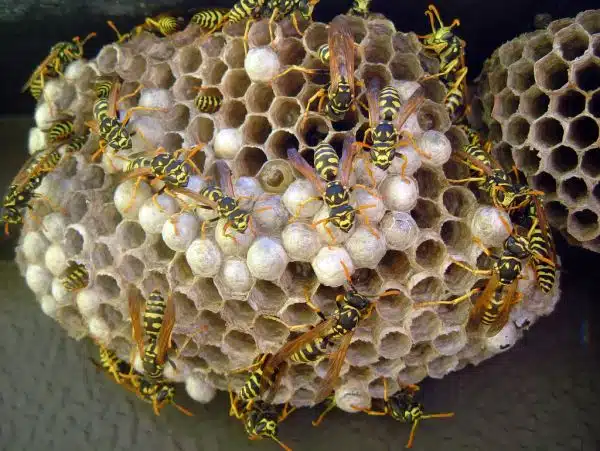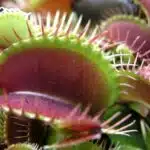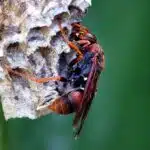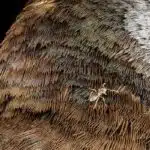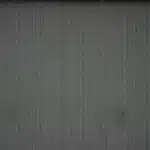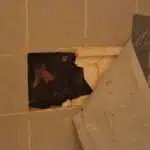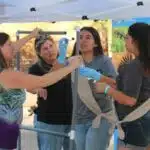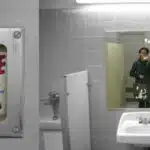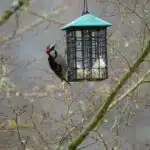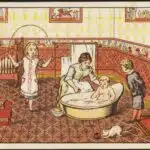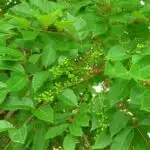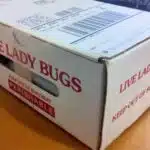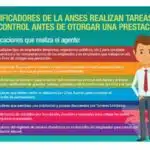Wasp nests can be a nuisance to homeowners and their families. They pose a risk of stings, especially to those who are allergic or sensitive to insect bites. Getting rid of a wasp nest can be difficult, but it is necessary for safety reasons. In this article, we will discuss the methods and techniques that pest control experts use to get rid of wasp nests.
Firstly, it is important to identify the type of wasps that have built the nest. There are different species of wasps and each has its own behavior and nesting habits. This information is crucial in determining the best approach for getting rid of the nest. Additionally, it is essential to wear protective clothing while dealing with wasp nests. This includes gloves, long-sleeved shirts, pants, and shoes that cover the feet completely. Furthermore, it is recommended that you work in teams when getting rid of a wasp nest – one person should handle the spray or insecticide while another person stands by with an escape route in case of an emergency. With these precautions in mind, let us delve into how to get rid of a wasp nest effectively and safely.
Identifying The Type Of Wasps
Wasps are a common sight in gardens and backyards, but not all wasps are created equal. To effectively get rid of a wasp nest, you need to first identify the type of wasps that have made their home there. There are two main types of wasps: social and solitary. Social wasps live in large colonies and build nests out of paper or mud, while solitary wasps live alone and do not build nests.
Common misconceptions about wasps often lead to confusion when it comes to identifying them. Many people mistake bees for wasps, but bees have rounder bodies and tend to be less aggressive than wasps. Another misconception is that all wasps sting, but in reality, only female wasps have stingers and will typically only use them if they feel threatened or their nest is disturbed.
To accurately identify the type of wasp you’re dealing with, look closely at its physical characteristics such as body shape, size, coloration, and behavior. Social wasps tend to be larger than solitary ones and are more aggressive when defending their nests. Solitary wasp species can vary greatly in appearance depending on the type of prey they hunt for food or lay eggs on. By understanding these differences between social and solitary species, you can better prepare yourself for getting rid of a nest safely without getting stung.
Understanding Wasp Behavior
Now that you know how to identify different types of wasp species, the next step is understanding their behavior patterns. Wasp behavior varies depending on the species and situation they find themselves in. For example, social wasps become more aggressive during late summer when their colony reaches its peak size. Solitary species may be more active during certain times of day or year depending on what they hunt for food or where they lay their eggs.
By learning about how different types of wasps behave, you can determine the best time to remove a wasp nest without putting yourself in danger. In the following section, we’ll discuss various methods for getting rid of a wasp nest depending on the species and behavior patterns of the wasps living there.
Understanding Wasp Behavior
Identifying the type of wasps is crucial in determining the best course of action to take when dealing with a nest. However, understanding wasp behavior is equally important to ensure a successful removal. Wasps are highly territorial insects that can become aggressive when they feel threatened. Aggression triggers include loud noises, rapid movements, and bright colors. It’s essential to keep these factors in mind when approaching a nest.
Communication methods also play a significant role in wasp behavior. Wasps use chemicals called pheromones to communicate with each other. These chemicals can signal danger or attract other wasps to an area. If you disturb a nest, you could trigger an attack from not only the wasps inside the nest but also those nearby that have detected the pheromones.
When it comes to removing a wasp nest, homeowners may be tempted to try DIY methods. While this can be effective for small nests, larger nests or nests located in hard-to-reach areas should be left to professionals. Professional pest control services have the necessary equipment and experience needed to safely remove nests without putting anyone at risk. Additionally, the cost of DIY methods such as sprays and traps can add up quickly and may not be as effective as professional removal services.
Assessing the location of a wasp nest is the next step after identifying its type and understanding its behavior patterns. The location of a nest plays a crucial role in determining if it’s safe to remove or if professional services are necessary. Nests located near high-traffic areas or close to homes should always be handled by professionals due to the increased risk of injury or property damage during removal. Once you’ve assessed the location of the nest, you can determine if professional services are needed and take steps towards safe removal.
Assessing The Nest Location
Before attempting to remove a wasp nest, it is imperative to assess its location. A nest located in an area of high human traffic, such as near a doorway or window, poses a potential threat for people in the vicinity. Additionally, the proximity of the nest to other structures such as sheds or trees could also affect the removal process. It is essential to evaluate whether removing the nest would cause any structural damage to surrounding buildings.
Signs of Nest Disturbance should also be taken into account when evaluating the location of a wasp nest. Any signs of aggression by wasps around their nest indicate that they are feeling threatened and may attack if provoked. Wasps are known to become increasingly aggressive during late summer and early fall when their food sources become scarce, so it is advisable not to attempt removal during this time.
Natural Wasp Repellents can aid in keeping wasps away from an area while assessing the nest location. Some natural repellents include peppermint oil, vinegar, or citrus oils. These can be used by placing them in small containers near the suspected nesting site or spraying diluted solutions around the area. It’s important to note that while these repellents may deter wasps temporarily, they will not eliminate an existing nest and should not be used as a long-term solution.
Assessing the location of a wasp nest is crucial before attempting removal, as it ensures that both people and surrounding structures remain safe throughout the process. By taking note of Signs of Nest Disturbance and using Natural Wasp Repellents to keep them at bay, one can effectively evaluate whether it is safe and appropriate to proceed with removal. The next step involves choosing the right time for removal without disturbing or provoking these stinging insects further.
Choosing The Right Time To Remove The Nest
After assessing the location of the wasp nest, it’s essential to choose the best timing for its removal. Timing is critical because it affects both your safety and the success of the operation. According to a study conducted by pest control experts, early morning or late evening is the best time to remove wasp nests since wasps are less active during these periods. During this time, wasps will be in their nest and less likely to attack you.
When preparing to remove a wasp nest, weather conditions play a crucial role in ensuring success. It’s advisable to avoid removing a wasp nest on windy or rainy days as these conditions can make it difficult to control the situation. High winds can make it challenging to aim insecticide sprays accurately, while rain can reduce their effectiveness. Additionally, extreme temperatures can affect how fast insecticides work.
Before removing a wasp nest, ensure you’re wearing protective clothing and equipment. Protective clothing like jumpsuits with hoods or beekeeper suits protects your skin from stings while gloves protect your hands. Eye protection gear like goggles shields your eyes from any flying debris during the operation. Remember always to wear closed-toe shoes or boots when working around a wasp nest. This protective gear will help minimize injuries while ensuring that you can safely remove the wasp nest without worrying about getting stung.
Preparing Protective Clothing And Equipment
Choosing protective clothing and essential equipment is a crucial step in preparing for DIY wasp nest removal. The primary objective of wearing protective clothing is to shield the skin from any accidental stings or bites. When selecting protective clothing, it is advisable to choose light-colored and thick materials such as denim, canvas or leather. Avoid bright colored clothes since wasps are attracted to them.
Essential equipment that should be used when removing a wasp nest includes safety goggles, gloves, and a respirator mask. Safety goggles protect the eyes from contact with debris or chemicals which may cause irritation, while gloves prevent direct contact with the nest and keep hands safe from accidental stings. A respirator mask protects the respiratory system from inhaling toxic fumes released during the process of removing the nest.
Precautions for DIY wasp nest removal include avoiding disturbing the nest during high activity periods. This may result in provoking wasps which can increase their aggression levels significantly leading to more severe injuries. It is also crucial to make sure that there are no allergic individuals around before starting the removal process since their reaction can be life-threatening. Always ensure that you have an escape route planned out in case things go wrong during the removal process.
By choosing appropriate protective clothing and essential equipment and taking necessary precautions, DIY wasp nest removal can be done safely and effectively. In the next section, we will discuss selecting appropriate insecticides or sprays to eliminate wasp nests effectively without harming people or pets in your surroundings.
Selecting Appropriate Insecticides Or Sprays
When selecting an insecticide or spray to get rid of a wasp nest, it is important to choose a product that is effective, safe, and easy to use. There are many options available in the market, including natural alternatives and chemical-based products. It is recommended to read the labels carefully before making a purchase and follow safety guidelines during application.
Natural alternatives such as mint oil, clove oil, and vinegar can be effective in getting rid of wasp nests without harming the environment. These products work by disrupting the communication between wasps, preventing them from returning to their nest. However, they may not be as potent as chemical-based products and may require multiple applications.
When using chemical-based insecticides or sprays, it is important to follow safety guidelines to minimize risks of exposure. Wear protective clothing such as long sleeves, pants, gloves, and goggles when applying the product. Apply the spray during early morning or late evening when wasps are less active. After application, wait for at least 24 hours before removing the nest to prevent any potential stings.
Next up: Using Non-Chemical Methods for Removal…
Using Non-Chemical Methods For Removal
One effective method for removing wasp nests is through the use of non-chemical techniques. These methods are preferred by many individuals due to their safety and environmental friendliness. Additionally, they can be just as effective as chemical methods when executed properly.
One technique for removing wasp nests without chemicals is using smoke. Smoke can be created through the burning of materials such as paper or wood chips, and it helps to calm the wasps down, making them less aggressive. Once the wasps have calmed down, the nest can be safely removed. Another non-chemical option is to use decoys for removal. Decoys are fake nests that mimic real wasp nests and can deter live wasps from building in the area.
Using water for removal is another non-chemical method that can be effective in removing a wasp nest. A high-pressure stream of water can knock down the nest and kill any wasps present. This method should only be used if there is a significant distance between the person and the nest, as spraying water too close to a nest could provoke an attack. Natural repellents for wasps, such as peppermint oil or vinegar, can also help keep wasps away from an area.
To ensure safety during removal, it’s important to create a safe escape route before attempting any method of removal. This means identifying all possible escape routes in case an attack occurs and ensuring that they are clear of obstacles or obstructions. By taking these precautions and utilizing non-chemical methods such as smoke or water, individuals can successfully remove a wasp nest while minimizing risk to themselves and others around them.
Creating A Safe Escape Route
Using non-chemical methods to remove a wasp nest is a safe and eco-friendly option. However, it is important to ensure that the process is carried out with caution to avoid any harm to yourself or others. Creating an escape route before beginning the removal process is crucial in ensuring your safety.
Creating an escape route involves identifying potential areas where you can safely retreat in case of an attack by the wasps. This could involve locating all possible exits from the area, ensuring they are clear and easily accessible. It may also involve identifying safe hiding spots nearby, such as behind a tree or another structure.
In addition to creating an escape route, it is important to have safe exit strategies in place should you need to evacuate quickly. This could involve practicing different evacuation scenarios with family members or colleagues prior to beginning the removal process. Having a plan in place will help you act quickly and calmly in case of an emergency situation. Planning your approach for removing the nest will be discussed further in the next section.
Planning The Approach For Removing The Nest
Developing strategies is crucial when it comes to removing a wasp nest. For instance, before embarking on the process, it’s essential to identify the location of the nest and assess the potential risks involved. This way, you can plan ahead and avoid any accidents or injuries that may occur during the removal process.
Seeking professional advice is another important aspect of planning your approach for removing a wasp nest. Pest control experts can provide valuable insights regarding the type of wasps present in the nest, their behavior patterns, and the most effective methods for eliminating them. Moreover, they can recommend suitable protective gear and instruct you on how to use insecticides safely.
When developing a strategy for removing a wasp nest, it’s crucial to consider safety measures. For example, ensure that children and pets are kept away from the area where you’ll be working. Additionally, wear protective clothing such as long-sleeved shirts, gloves, pants, boots or shoes with socks tucked in. Finally, make sure that you have an escape route planned in case something goes wrong.
- Determine if it’s safe to remove the nest yourself or if professional help is needed
- Choose a time when wasps are less active (early morning or late evening)
- Obtain appropriate equipment such as protective gear and insecticide
- Plan an escape route before beginning any work
With proper planning and preparation, removing a wasp nest doesn’t have to be a daunting task. In the next section about applying insecticide or spray, we will discuss some of the critical steps involved in this process so that you can effectively eliminate these pests from your home or property.
Applying The Insecticide Or Spray
After carefully planning the approach to remove a wasp nest, it is time to move on to the next step: applying the insecticide or spray. Before starting, ensure that you have all the necessary protective gear such as gloves, long sleeves, pants and closed-toe shoes. Also, make sure that no one with allergies or sensitivities to insecticides is nearby.
Spray application techniques vary depending on the type of pesticide being used. It is important to read and follow the instructions on the label carefully. Spray from a distance of about 10-15 feet away from the nest, aiming for the opening where wasps enter and exit. Do not stand directly underneath it as this may cause an angry swarm of wasps to attack you. Repeat until all visible wasps are dead or gone.
If you prefer natural repellent alternatives, there are several options available such as peppermint oil or vinegar spray. However, be aware that these may not be as effective as chemical insecticides and may need multiple applications. Regardless of which method you choose, always remember to dispose of any leftover chemicals safely and avoid contaminating surrounding areas.
Moving forward with removing the nest requires caution and diligence in order to avoid injury or harm. In the next section, we will discuss how to remove the nest after ensuring that all wasps have been eliminated.
Removing The Nest
Identifying wasp behavior is the first step in getting rid of a wasp nest. Wasps are most active during the day and tend to become more aggressive when their nests are disturbed. They often build their nests in sheltered areas such as eaves, attics, and trees. If you notice a high number of wasps flying around a particular area, it may be an indication of an active nest nearby.
Before removing the nest, it is important to prepare protective clothing to minimize the risk of being stung. Wear long sleeves and pants, gloves, and a hat. It is also advisable to cover your face with a mask or veil. When using insecticides or other chemicals to remove the nest, make sure to read and follow the instructions carefully.
When removing the nest, be sure to approach it slowly and calmly. Sudden movements or loud noises can agitate the wasps and cause them to become defensive. Use a pesticide spray specifically designed for wasp control and aim at the entrance of the nest. Wait until nightfall when all wasps are inside before removing the nest.
- Seal off entry points: After removing the nest, seal off any entry points that could allow new wasps to rebuild in that location.
- Regularly inspect your property: Check your property regularly for any signs of new nests forming.
- Hire a professional: If you are uncertain about handling a wasp infestation on your own, consider hiring a professional pest control company.
- Dispose of waste properly: Make sure to dispose of any chemicals or debris from the removal process properly according to local regulations.
As you finish up with removing the wasp’s nest, it is essential not only just remove it but dispose of it properly as well. Failing to do so can lead to re-infestation or harm wildlife in your area. Therefore, in disposing of this waste properly underlines its importance as much as eliminating pests themselves.
Disposing Of The Nest Properly
Removing the wasp nest is only half of the battle. Proper nest disposal is equally important to ensure a safe and eco-friendly environment. Just like how bees are crucial pollinators, wasps play an essential role in controlling other insect populations. As such, it is essential to dispose of their nests properly, ensuring that they do not cause any harm to the environment.
One way of disposing of the nest is through recycling. Recycling centers may accept paper wasp nests since they are made from natural materials such as wood fibers and saliva. However, before recycling, make sure there are no remaining wasps inside or near the nest. Another option for proper disposal is through landfilling. Landfill sites are equipped to deal with hazardous waste materials safely.
The environmental impact of disposing of wasp nests cannot be overstated. Wasps play a vital role in our ecosystem by controlling other insect populations and pollinating plants. By properly disposing of their nests, we can ensure that we do not disrupt this delicate balance and maintain a healthy environment for all living things. Remember always to follow proper disposal methods to avoid causing harm to our surroundings.
Preventing future wasp infestations requires vigilance and knowledge about their behavior patterns and nesting habits. In the next section, we will discuss effective ways on how you can prevent future infestations without using harmful chemicals or pesticides that could potentially harm you or your family members’ health.
Preventing Future Wasp Infestations
Preventive measures can be taken to avoid future wasp infestations. One of the simplest and most effective solutions is to block off potential entry points for the wasps. This can be achieved by sealing cracks or gaps in walls, roofs, and around windows and doors. Additionally, keeping outdoor trash cans tightly sealed and regularly removing any food items from outdoor eating areas can help deter wasps.
Another long term solution is to plant certain types of plants that repel wasps. These include herbs such as mint, thyme, and basil, as well as flowers like marigolds and geraniums. These plants not only keep wasps away but also add beauty to your outdoor space.
It is important to remember that preventive measures may not always be enough to fully prevent a wasp infestation. If you suspect a problem or have had issues with wasps in the past, it may be best to seek professional pest control services for a more comprehensive approach to prevention.
Transition: While taking preventive measures can greatly reduce the likelihood of future wasp infestations, sometimes professional intervention is necessary. In such cases, it is best to hire experienced pest control professionals who can provide effective solutions tailored to your specific needs.
Hiring Professional Pest Control Services
With their menacing stingers and aggressive behavior, wasps can be a serious threat to the safety of your family and pets. If you have a wasp nest on your property, it’s important to get rid of it as soon as possible before someone gets hurt. While there are several DIY methods for removing wasp nests, hiring professional pest control services is often the safest and most effective option.
Benefits of Professional Pest Control Services:
- Expertise: Professional pest control technicians have training and experience in identifying different species of wasps and handling them safely.
- Equipment: They have specialized equipment and protective gear that allows them to remove the nest without putting themselves or others at risk.
- Guarantee: Many pest control companies offer a guarantee on their services, giving you peace of mind that the nest will be fully eliminated.
Risks of DIY Wasp Nest Removal:
- Lack of knowledge: Without proper knowledge and training, attempting to remove a wasp nest can result in serious injury or even death.
- Aggravation: Trying to remove a wasp nest yourself can cause the insects to become more aggressive and attack you or others around you.
- Ineffective methods: DIY methods may not fully eliminate the nest, leaving you vulnerable to future attacks.
Professional pest control services provide numerous benefits over attempting DIY removal. Not only do they bring expertise, equipment, and guarantees to the table, but they also minimize the risks associated with DIY methods. By leaving it to the professionals, you’ll ensure that the job is done right while keeping yourself and your loved ones safe from harm. In the next section, we’ll discuss some safety precautions and tips for those who do choose to attempt removing a wasp nest on their own.
Safety Precautions And Tips For Diy Nest Removal
Hiring a professional pest control service for removing wasp nests is the safest and most efficient option. However, if you decide to deal with the problem yourself, it’s important to take necessary precautions to avoid injuries and possible fatalities. DIY nest removal can be hazardous, especially if you don’t have the right protective gear.
Before attempting to remove a wasp nest on your own, make sure you have all the necessary protective gear. This includes a full-body suit, gloves, boots, goggles or glasses, and a hat with a veil. Wearing long-sleeved shirts and pants is also recommended. Keep in mind that wasps can sting repeatedly and their venom can cause severe allergic reactions or even death in some cases.
In case of emergency response due to stings during DIY nest removal, call for medical attention immediately. If you are allergic to insect bites or stings, it’s strongly advised not to attempt DIY removal of wasp nests. Remember that prevention is always better than cure when dealing with pests like wasps. Take proactive measures such as sealing cracks in walls and windows or trimming bushes and trees around your home to prevent wasps from building their nests near your property.
Conclusion
Removing a wasp nest can be a daunting task, but with the right knowledge and equipment, it can be done safely and efficiently. Identifying the type of wasps present in the nest is crucial since different species have varying behavior patterns that require different methods of removal. It is also important to assess the nest location carefully and choose the right time to remove it when the wasps are less active.
Protective clothing and equipment must be used during nest removal to prevent stings and injuries. Proper disposal of the nest is also critical to ensure that no wasps return. Preventing future infestations involves taking measures such as sealing cracks and crevices around your home.
While DIY removal can be attempted, hiring professional pest control services may be necessary for larger or hard-to-reach nests. Remember to always prioritize safety during nest removal, follow proper procedures, and take precautions to avoid any accidents or injuries.
As pest control experts say, “An ounce of prevention is worth a pound of cure.” By understanding wasp behavior, assessing their habitat, properly removing their nests, and taking preventative measures, you can keep your home safe from potential infestations. Don’t wait until it’s too late; take action now to secure your home against these pesky pests!
Image Credits
- “Wasp Nest” by (Alex) (featured)

